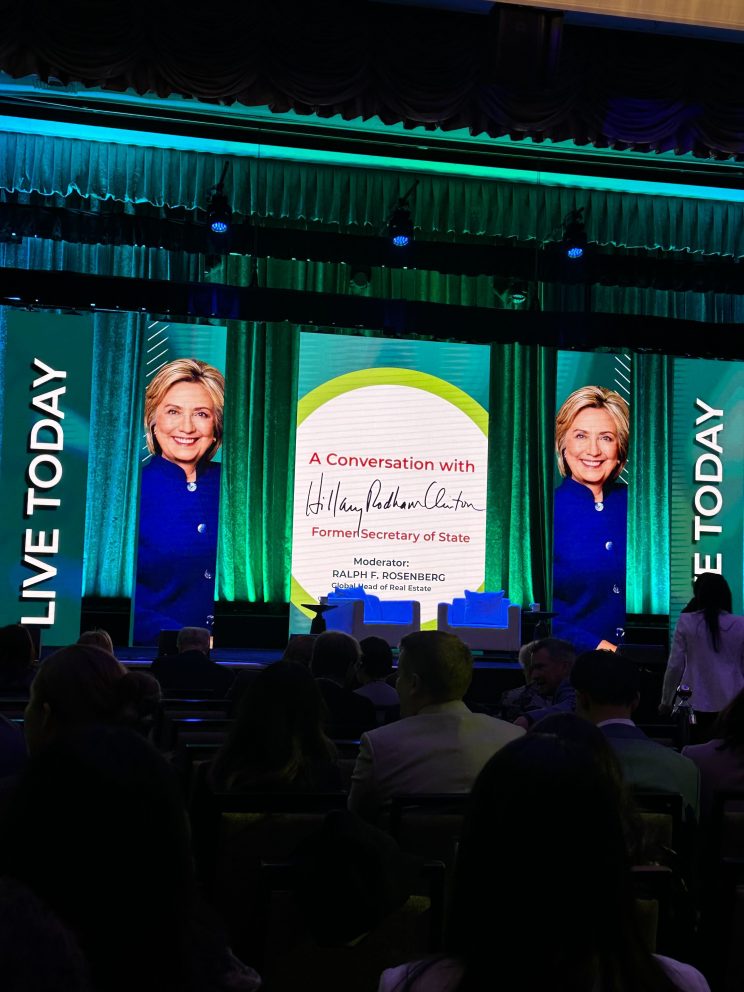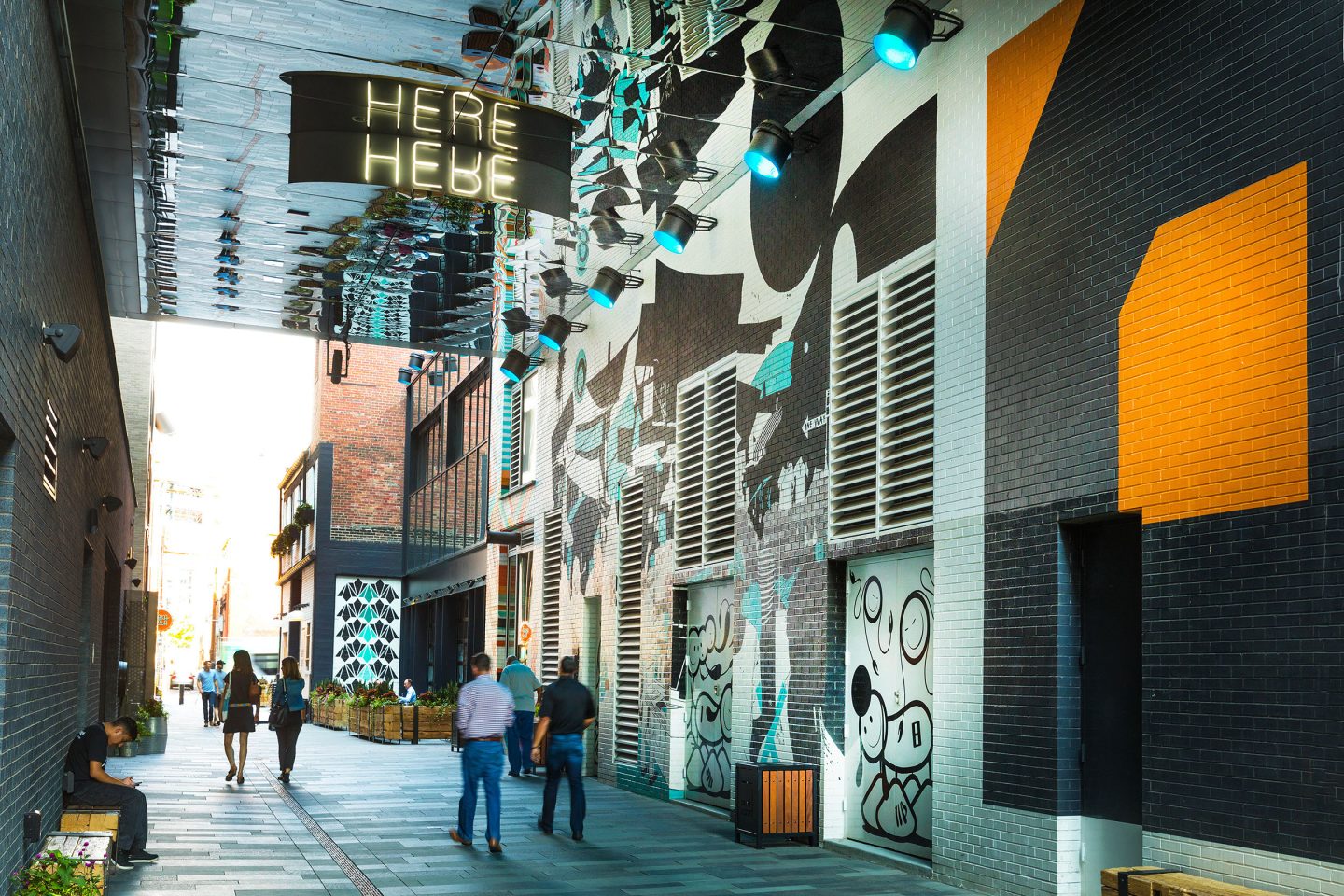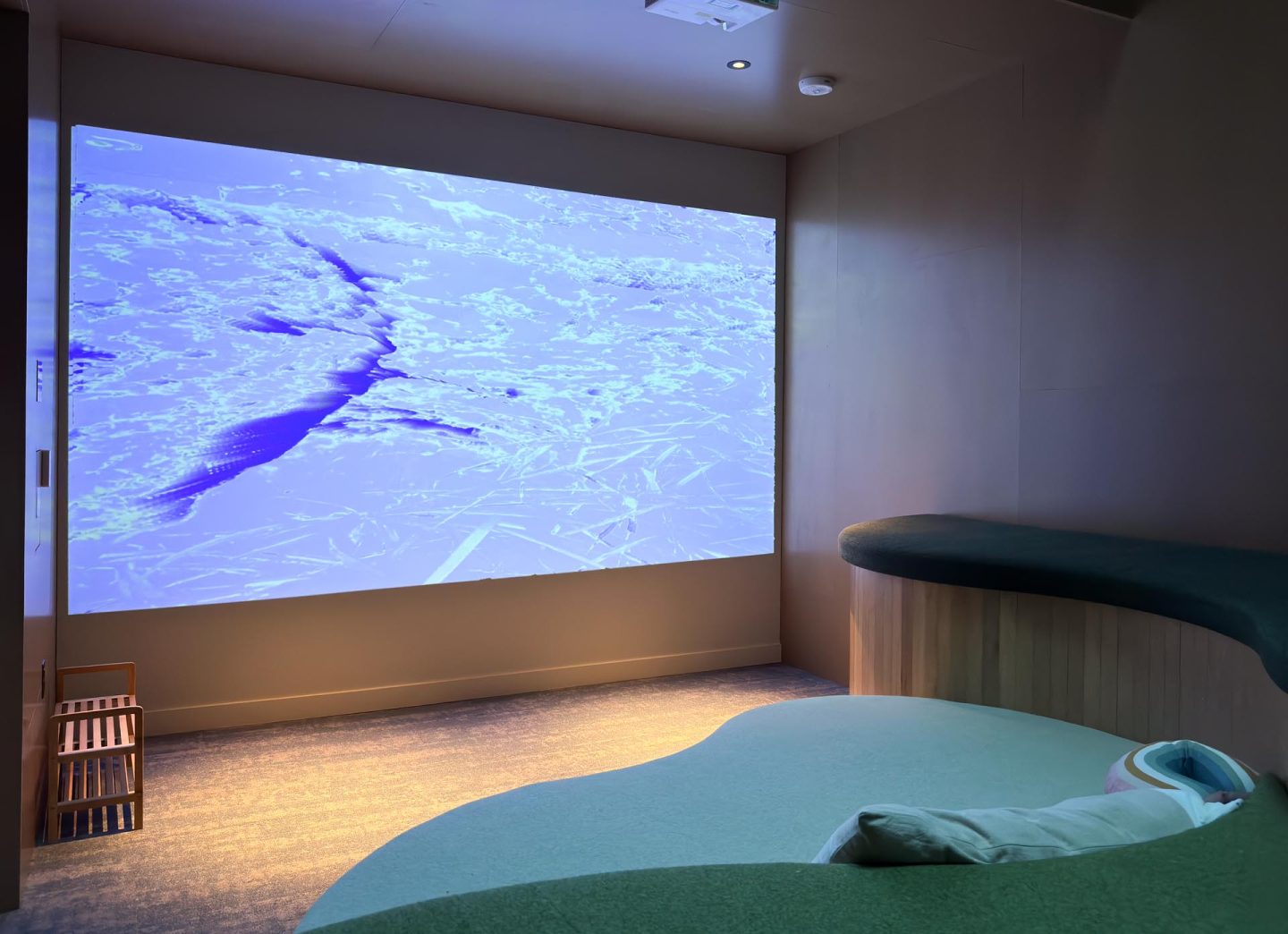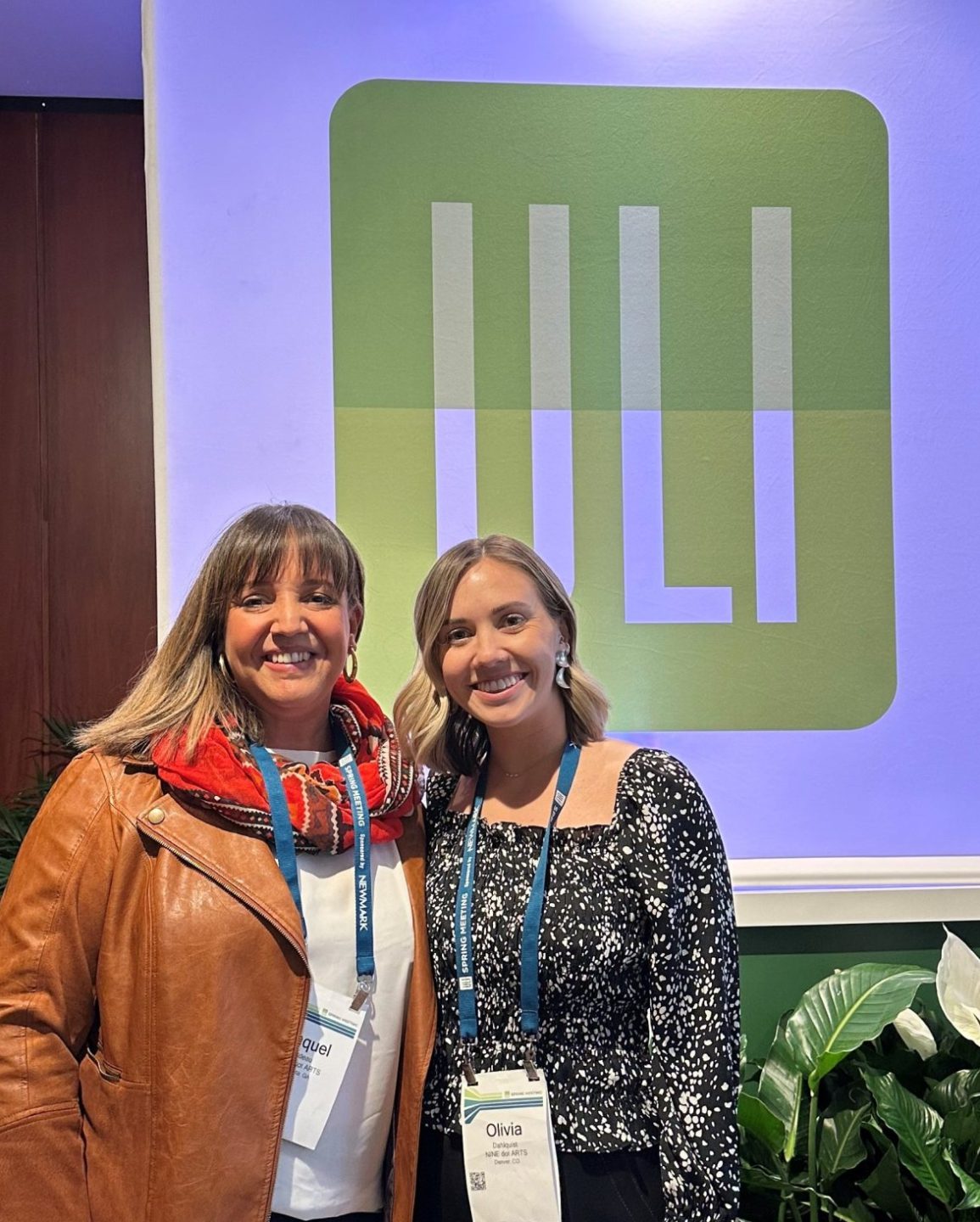The Critical Nature of Creative Placemaking
A Recap of the 2024 Urban Land Institute Spring Meeting
The 2024 Urban Land Institute (ULI) Spring Meeting in New York City was a convergence of some of the brightest minds and influential leaders working to improve our built environment. The event provided a platform for networking, idea exchange, and exploration of both the opportunities and challenges facing cities today – from financing and technology to housing and climate change. Opening with an inspiring keynote from former Secretary of State Hillary Rodham Clinton, the event promoted the importance of responsible leadership and civic engagement to tackle today’s most pressing challenges. And despite the conflicting urgencies and priorities facing real estate leaders, our team was proud to see greater acknowledgement of art and culture as critical tools for driving social equity and economic development within the many public and private sector projects shaping our urban fabric.
Below we describe some of the stand-out events, connections, and initiatives that our team was fortunate to be part of.

Art in Place Initiative: Connecting Arts + Real Estate
One of the most notable gatherings was the Art in Place (AIP) breakfast and tour, where several leaders gathered at Manhattan’s New 42 Studios, one of New York’s most transformative cultural nonprofits that offers space, studios, and services to performing artists. A highlight of the breakfast was hearing about the history of New 42 from Matthew Kwatinetz, Clinical Assistant Professor of Real Estate Economics and the Director of the NYU Urban Lab. Kwatinetz – a former theater director turned real estate developer and expert – described how the development of the nonprofit transformed a once neglected, crime-heavy area into a desirable tourist destination home to seven historic performing arts theaters.
New 42 launched the transformation of the block by transforming The Victory into the New Victory as the city’s first theater for kids and families, and building the New 42 Studios to support the creation of new work—forever ensuring the legacy and vitality of America’s most iconic theater district. The New 42 continues to steward the block and support the City’s efforts to maintain West 42nd Street as a safe and exciting destination for both our local community and visitors to New York City.
Kwatinetz shared how this iconic redevelopment project leveraged the arts to enhance the district and create major economic impact, serving as a model for the ways in which creative placemaking can help revitalize spaces while producing significant social and financial returns for business and communities. Kwatinetz’ insights were complemented by research findings from Megan Miller, masters candidate at The London School of Economics and Senior Advisor for the Burning Man Project. Having interviewed NINE dot ARTS CEO Martha McGee and several other thought leaders in the creative placemaking field, Megan shared insights around how the field has evolved in the last 20 years – with more real estate professionals recognizing its value – as well as best practices and lessons learned.

Our team is thrilled to have connected with so many passionate leaders in this space, and we look forward to sharing the results of Millers’ work and other important initiatives resulting from Art in Place.
The Women’s Leadership Initiative: Addressing Changing Demographics
As a women-founded, owned, and operated company, NINE dot ARTS was proud to participate in the The Women’s Leadership Initiative’s curated “dine-arounds” where women across industries and regions were convened to explore how women and other underrepresented groups can improve the culture of the real estate market, especially as research from the Brookings Institute reports on our nation’s rapid diversification. The fact is, audiences, tenants, and decision makers of the future are going to be increasingly diverse, with cultural histories and lived experiences that are different from that of white men who make up the majority of real estate professionals and who were long considered the standard “user” for whom spaces were designed.
Fortunately, ULI’s formation of groups like the Women’s Leadership Initiative; the Young Leaders Group; the Diversity, Equity, and Inclusion Committee; and others are particularly poised to address such findings, producing inclusive design and development strategies to ensure our built environment is accessible to and reflective of our diversifying population. And art is essential in creating such spaces of belonging.
The Future of Downtowns

Denver’s Mixed-Use Microdistrict, Dairy Block Alley
The Spring Meeting featured several conversations on the future of downtowns, with emphasis on transforming central business districts into central social districts. This shift is evident in the rise of lifestyle-focused urban developments with a unique mix of retail, restaurant, residential, office, and green space, offering people greater connectivity, convenience, and cohesion in their daily lives. Downtowns that prioritize this mix of uses – along with quality public transportation for easy commute by locals and visitors – will be an attractive alternative to an increasingly digital world, as well as an antidote to the isolation caused by the pandemic – and the lingering effects that remain.
Downtowns that blur the line between traditionally “separate” sectors like office and retail can prompt seamless socialization and spending through a pedestrian walkway lined with local shops, for example, or a sculpture park primed for civic engagement. It’s these kinds of public spaces that form the basis of a true neighborhood – one people can contribute to and take pride in.
But to achieve such results, the reimagining of downtowns has to focus on people, not buildings. Leaders must place community at the center of their design solutions, asking questions like: What’s the walkability? Where’s the closest F&B location? How can visitors best engage with each other and their surroundings? How will the built environment honor the neighborhood culture? It’s such questions – complemented with community-oriented arts and cultural programming – that will help real estate leaders deliver authentic and inclusive urban destinations that keep people coming back.
Other Trends, Insights, and Takeaways
Panels and presentations provided unique insights into major trends and takeaways related to the state of the commercial real estate market – and how art and culture are part of the conversation.
- Senior Living and Multigenerational Design: Discussions on senior living emphasized the need for multigenerational interactions and community involvement. Most of our lives are spent interacting with people of all backgrounds and ages, so why should our later years be any different? As such, panels highlighted the importance of mixed-use design and creative partnerships with local schools and nonprofits to incentivize multigenerational engagement within and around senior living communities, offering case studies like Rancho Mission Viejo as an example of these trends.
- Model Projects: Our team was especially inspired by Freedom West 2.0, a project aimed at revitalizing the Freedom West Homes in San Francisco, the largest and oldest co-op in western North America with 382 existing homes and 2,000 new ones. The project’s primary objective is to provide a sustainable future for the predominantly African American and East Asian population, with goals to restore the city grid and preserve neighborhood character. Leaders from MacFarlane Partners, Legacy First Partners, Avanath Capital Management, and Gensler spoke about their commitment to community equity through financial investment, development, and design, with a goal of exemplifying how equitable redevelopment and purposeful placemaking can preserve homeownership and enhance community wellbeing.
- Public-Private Partnerships: Successful urban development projects often rely on collaborations between public and private entities, leveraging the strengths of both sectors to create impactful and sustainable outcomes. Intentional listening and interdisciplinary collaboration is key for ensuring projects are equitably funded, maintained, and evolve with community needs.
- Flexibility and Adaptability: The future of urban spaces, particularly office environments, requires flexibility. Developers and planners must adapt to changing needs and preferences, particularly in the wake of the pandemic. But transitioning offices into multifamily buildings – a trend gaining momentum as the need for affordable housing increases – has proven to be more challenging than some may realize. As one leader said, “legal permissions, physical implications, and financial feasibility all spark questions as to whether conversation is worth it.” From zoning and regulatory hurdles to infrastructure challenges that make conversion both costly and time-consuming, the barriers for redevelopment have some leaders second guessing its value. Still, consensus remains that office buildings and other asset types need to be built for flexibility, allowing them to evolve with the times, adapt to other uses, and offer flexibility in support of the continually changing hybrid and remote work landscape.

Zen Room at Google’s 6th Street Campus Expansion with video installation by Mokedo
- Wellness and Wellbeing: The focus on wellness continues to grow, but its definition is expanding. Beyond just physical health, more and more projects are recognizing the value of social connectedness and a sense of purpose in supporting individual and collective wellbeing, and thus using innovative strategies to promote these benefits. From biophilic design, to youth classes inside senior centers, to creative amenities that combat isolation, leaders are thinking more and more outside the box – and listening to their intended users with intention – to create spaces that promote wellbeing in all forms.
- Arts and Culture in NYC: Kate Gavriel from Two Trees Management and Laurie Cumbo from NYC Department of Cultural Affairs discussed how art can act as a catalyst for social change and economic development. Their insights into integrating art into real estate projects and community spaces resonated with the values of many attendees, emphasizing the need for forward-thinking cultural strategies that place artists, creative professionals, and community leaders at the center of new and redevelopment projects.
Best (and Underrated) NYC Arts & Cultural Destinations
We would be remiss not to mention some of the incredible creative destinations our team learned about from NYC residents. Beyond the popular Metropolitan Museum of Art, colleagues highlighted some of NYC’s lesser-known cultural gems, such as Snug Harbor Cultural Center and Botanic Garden on Staten Island, Giants: Art from the Dean Collection of Swizz Beatz and Alicia Keys at the Brooklyn Museum, the Bronx Children’s Museum, the Tenement Immigration Museum, and the Dumbo Open Studios initiative in Brooklyn. These destinations exemplify how local art and cultural initiatives can enrich urban life, attract tourism, stimulate economic and social benefits for business and cities.
Conclusion
The 2024 ULI Spring Meeting in New York City was a testament to the transformative power of art and culture in urban development. The discussions and connections reinforced the idea that art (of all kinds) in the built environment is not just beneficial, but truly essential for creating dynamic, equitable, and resilient cities. As urban planners, developers, and community leaders move forward, such insights will undoubtedly inspire innovative, impactful projects that enhance our quality of life. And we’re looking forward to being part of the transformation.
The Urban Land Institute is “where the future is built,” and lessons from the Spring Meeting reaffirm that where the future is built, there will undoubtedly be art.
